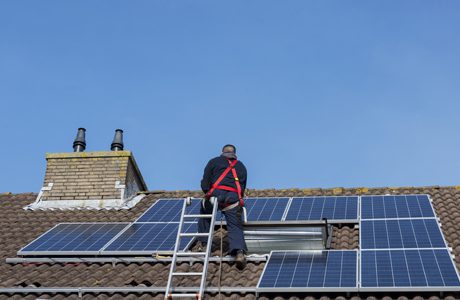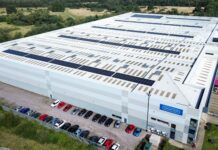
What are the types of photovoltaic panels and how do they differ?
There are three basic types of photovoltaic panels: amorphous, polycrystalline and monocrystalline. The difference lies in the type of silicon they are made of. It is very easy to tell them apart visually. Monocrystalline panels, made of a single silicon crystal, are easily recognizable by the hexagonal shape of cells, resulting in distinctive grey rhombuses on the entire surface of the panel. Polycrystalline panels have a visibly uneven crystal structure due to the fact that they are made of crystallised silicon. Amorphous panels are cheapest in production, but their efficiency is lower than that of poly- and monocrystalline panels. Their lifespan is also shorter – 8-10 years. Amorphous cells are used e.g. in electronic calculators.
Any important things to note when choosing PV panels?
The most important thing when choosing panels is their efficiency and production costs which in turn determine the final price of the product. The best efficiency-to-price ratio is offered by polycrystalline panels.
Does solar power make a profit and why?
The use of photovoltaics creates real possibilities to save on electricity and to make a profit from the sale of excess energy produced by the panels to the grid. It creates independence of rising electricity prices. Today we can see a tendency to promote micro-installations and generation of electricity by prosumers, therefore – in Poland, for example – there is a possibility to acquire a 40% funding support for the purchase and installation of small or micro-installations of renewable energy sources, and the remaining 60% can be covered by a preferential loan. A standard roof-mounted installation costs 2,500 – 4,500 Euro, but its lifetime is at least 25 years. We also have to remember about the environmental benefits offered by photovoltaics.
What are the benefits of solar power?
The main advantage of solar energy is that it is simply available everywhere, and it’s only up to us to what extent it will be utilized. Solar power can be a perfect supplement for other sources of energy during daytime peak hours, which is exactly when solar is most available.
How big an installation should be mounted on a roof of a single-family house to cover the energy demand for the whole family?
This depends on the roof that we have. As a standard, a 4 kWp installation can be placed on a typical detached, single-family house. Such an installation generates ca. 3,600 kWh per year, and the average yearly energy demand in such a building for a family of four is 2,500 kWh. However, each case should be treated individually, as the demand depends on the number of appliances in the house, their energy efficiency and heating method.
What is the best type of roof for photovoltaic installations?
[The ideal scenario for a building] is a gable roof with one slope towards the south. A roof with multiple slopes and a large number of dormer windows is rather problematic in terms of planning an efficient installation. All objects on the roof, such as roof windows, chimneys, antennas etc. are also obstacles. The neighbourhood of the building is also important, as to whether there are any shadow-casting objects, like trees or tall buildings.
In these cases the determining factor is the size of roof surface that can be used.

What about unwanted waste from discarded PV panels?
Photovoltaic (PV) panels are made of materials that are fully recyclable. Crystalline silicon, aluminium and glass can be recovered and recycled. Companies who offer PV panels under their own brands, like vortex energy, have a PV CYCLE marking in their product data sheets. This means that the panels will be taken back and recycled.
What about large-scale PV farms and their impact on the environment?
Companies with adequate knowledge and experience in the development of renewables know that the crucial component in the development process of a free-standing photovoltaic farm is identifying an optimal piece of land. This is crucial with regard not only to the energy potential but also to development plans for the area and to environmental conditions. A PV farm does not use water or any other resources, materials or fuels during its operation, it also does not produce any sewage.
More information is available from Vortex Energy at vortex-energy.pl.






